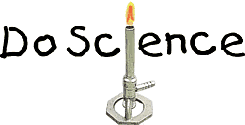![]()

|
The Archive List |
|
Do you have a comment or response to this activity, submit it to the Do Science bulletin board. |
![]()
"WITHOUT YOU, ALGA, I'M JUST A FUNGUS"
Have you ever walked through groves of trees and seen some looking as if they're covered with blue-green cobwebs? The thready, blue-green "stuff" covering the branches is actually a living thing called a lichen that has a very strange lifestyle that's easily discovered.
Materials:
- Fruticose lichen (thin, threadlike, branching type)
- Mortar and pestle or similar crushing device
- Water
- Dropper
- Microscope slides and cover slips
- Compound microscope with 400X magnification
To Do and Notice:
- Place a tiny piece of fruticose lichen (about 2 cm long) into a mortar. Add three drops of water and crush vigorously with the pestle. The resulting fluid should be a dense, dark green or blue green.
- Remove a drop of the liquid "crushate". Avoid solid chunks of lichen. Make a wet mount of the drop on a slide.
- Focus on the drop with low power of the compound microscope. Increase the magnification to 100X. Try to locate some bright greenish areas, or tiny green spheres (single or clustered). When you've located some, increase the magnification to 400X. What do you see?
What IS That?!!!
When you look at the slide, you should see some green spheres and some gray or clear stringy fragments. The green spheres are single-celled algae and the strings are pieces of a fungus. How did our lichen become transformed from one organism into these two?
A lichen only exists because an alga and a fungus live together in a very close association called a symbiosis. Crushing the lichen liberated the symbiotic partners from their tight embrace.
Partners Forever!
The type of symbiotic relationship exhibited by the algae in fungi in a lichen is called mutualism, because both partners benefit. The algae are green because they contain photosynthetic pigments, which means that they can manufacture their own food. The algae live inside the stringy fungal hyphae, where they are safe from many predators. The non-photosynthetic fungi benefit from this relationship because the algae share their food with them.
There are hundreds of different types of lichen, distinguished by the type of alga and type of fungus forming the organism. When separated in the laboratory, the fungus always dies, but sometimes the alga can be established as a separate organism.
Copyright KK 2000.